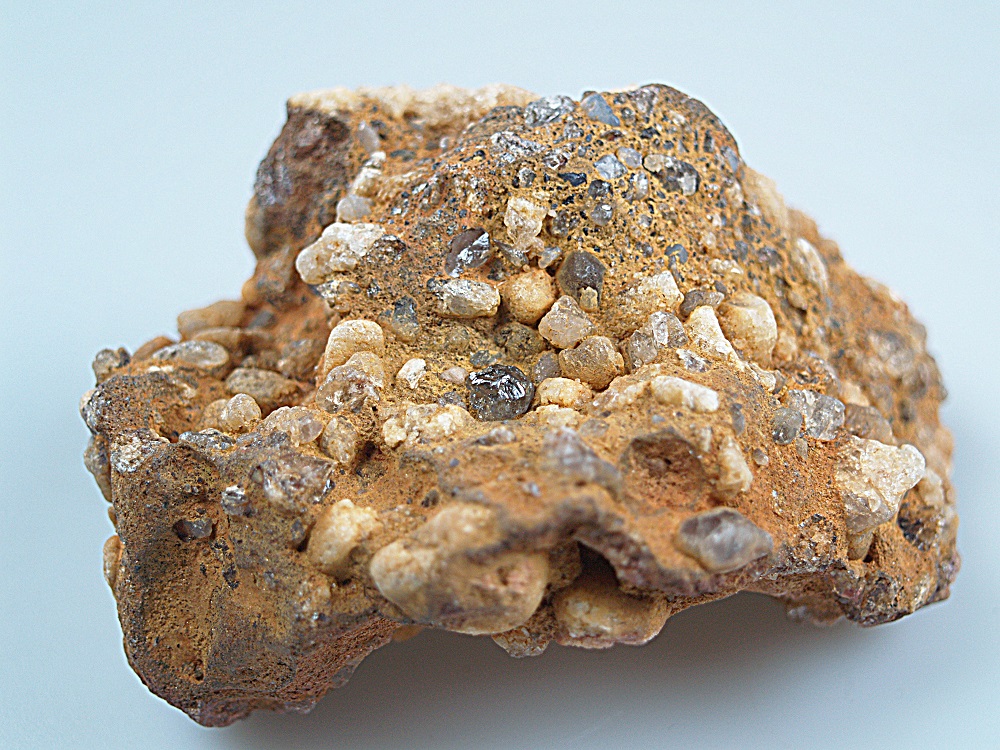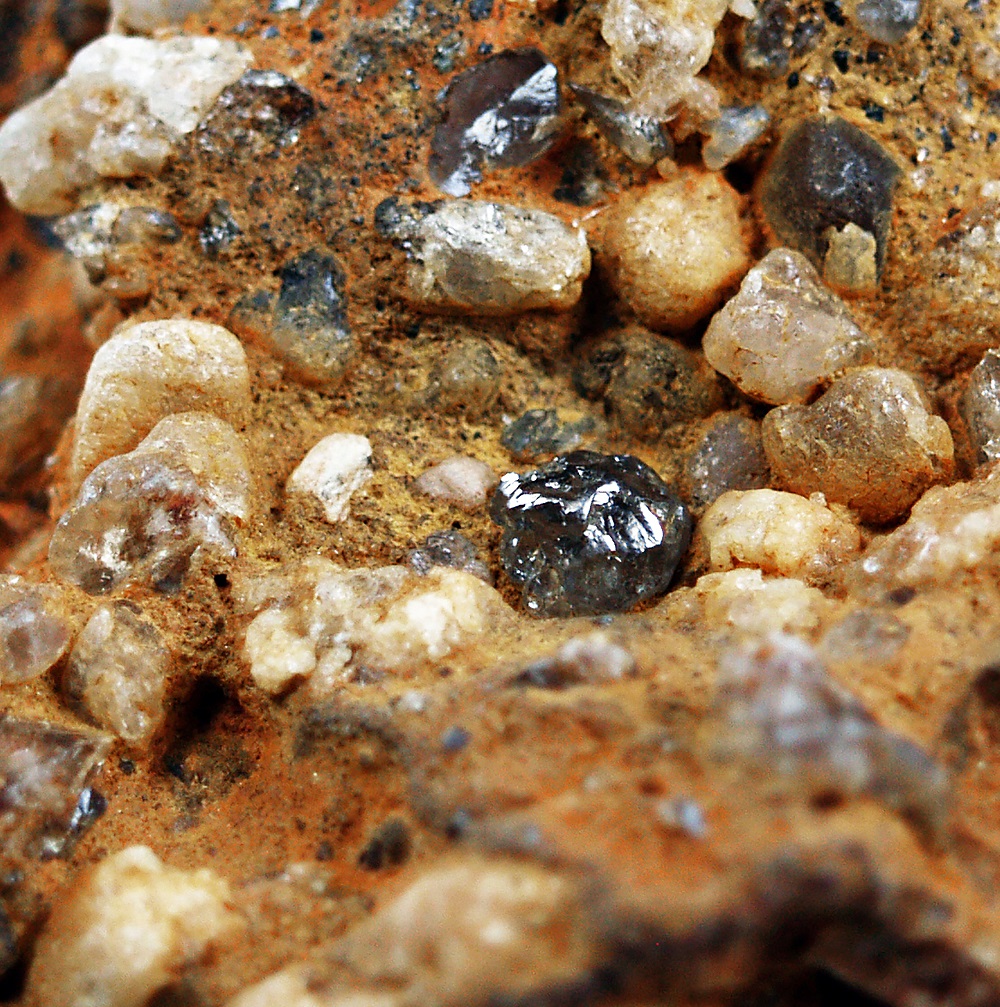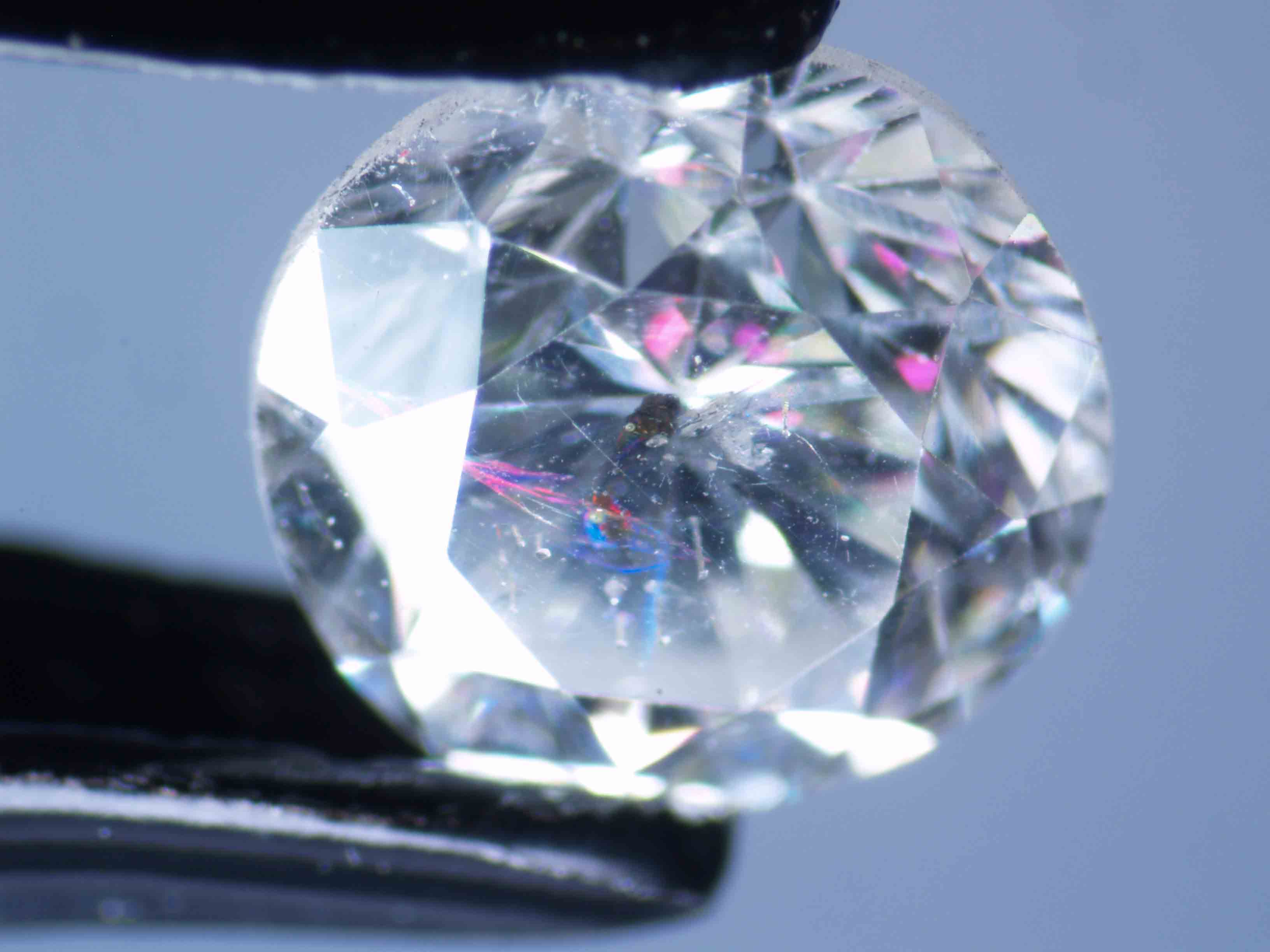
Can inclusions ever increase the value of a diamond?
Inclusions in diamonds are typically considered a negative trait, especially where their commercial value in the jewellery trade is concerned. But, as Gem-A Tutor Pat Daly explains here, inclusions in diamonds can be a fascinating area of study for gemmologist. Let’s consider some of the ‘disruptions’ to a diamond’s carbon lattice and uncover more about what makes inclusions so interesting.
When measured by value, diamonds are the most important gemstones in the jewellery trade. Their quality is assessed in terms of the 4Cs; clarity, colour, cut and carat weight. The ideal diamond to be set in jewellery has no internal feature that an expert can see at ten times magnification. Accordingly, feelings about inclusions in diamonds are largely negative, especially if they can be seen easily with a loupe.
However, those who are interested in diamonds may find inclusions beautiful and intriguing in themselves and appreciate the information they give about their growth and the otherwise inaccessible regions of Earth from which they come. Insights may be gained into the Earth’s mantle, its composition, and the connection between it and the movement of continents and oceans by plate tectonics.

Diamonds in conglomerate matrix photographed by Henry Mesa.
Some inclusions reveal the treatment of diamonds to change their colours or to modify their inclusions. Others supply evidence which can be used to separate natural from synthetic stones.
Common Inclusions: Diamond Cleavages
The commonest inclusions are cleavages, known as feathers in the diamond trade, and the black mineral films which sometimes coat them. Diamond is a tough material, but when it breaks, it does so more readily along flat surfaces, in four directions which are parallel with octahedral crystal faces. They are not desirable inclusions, but they are useful to gemmologists. Convincing diamond simulants do not possess this property, so it proves the identity of some diamonds. Many cleavages are thought to occur during the rapid and violent ascent of the volcanic rocks, which bring diamonds from the depths to the Earth’s surface.

An included diamond from the Gem-A Archives, photographed by Henry Mesa.
Diamond Colour Zoning
A common feature of brown and pink diamonds is straight colour zoning parallel with the crystal faces of the growing stones. A feature called graining, which might be described as a kind of zoning recognised by optical features other than colour, is probably related to it. When it is subjected to stress within the Earth, diamond, in common with other minerals, may change its shape without breaking. However, it does so in certain definite directions in the crystal, and traces of this distortion may be evident as colour zones or graining.
Irradiated Diamonds
Some stones of poor colour that have been irradiated or may have been heat-treated to change them to attractive colours also show colour zoning. One of the most striking types has a shape resembling an open umbrella around the culet. This is seen in some stones which were irradiated by electrons in a machine called a cyclotron. Other types of colour zoning may be seen in stones irradiated in the past, but modern treatments tend not to leave such evidence.
Crystals of Minerals within Diamond
Tiny, indeterminate inclusions may be grouped into geometric shapes. For example, inclusions which resemble minute sugar cubes are seen in some diamonds.

Dark inclusions in a diamond photographed by Henry Mesa.
Crystals of minerals which grew before, or at the same time as the host diamond, may be preserved within polished stones. Recognizable crystals are rare, occurring in about 1% of diamonds, but they tend to be eye-catching, and they can be very attractive. Despite their infrequency, it is easy to compile a list of 30 or more minerals by looking through recent articles in gemmological journals and standard works on gemstone inclusions.
Diamond crystals, for example, may be swallowed up by larger stones and may be recognised by their octahedral forms. Where one of them intersects the surface of a polished stone, a raised feature called a naat might result from differential hardness effects when the crystal structures of the two diamonds are not in alignment.
Diamond Growth and Inclusions
Most diamonds grow at about 100 to 250 Km below the surface of continents in two main rock types. It has been calculated that about two-thirds form in peridotite, a rock composed largely of olivine (of which the gem variety is peridot) and other minerals such as pyrope garnet and diopside. Transparent, white olivines are among the commonest crystal inclusions in diamonds. Chromium is a noteworthy minor chemical constituent of peridotite. It causes the bright red colour of pyrope and the bright green of diopside inclusions, indicating that diamonds formed in this rock type.

Diamond in conglomerate matrix, photographed by Henry Mesa.
The other type is eclogite, the high-temperature and pressure metamorphic equivalent of common ocean floor rocks. It can be a visually striking rock composed of green pyroxene and red garnet. Pyroxenes belong to a group of common rock-forming minerals, some of which are familiar to gemmologists. The one in eclogite is intermediate between jadeite and diopside. The garnet is intermediate between pyrope, almandine and grossular. Chromium is less abundant in eclogite than peridotite, and the colours of these crystals incline towards orange in the garnets and greyish green in the pyroxene, in contrast to the bright colours of those materials in stones from peridotites.
Blue crystals of kyanite and brownish-to-black rutile inclusions may also be found in diamonds from eclogite.
Rare Diamonds
More rarely, diamonds that grew at greater depths, between 400 and 800 Km, are brought to the surface. They are of great interest because they may be large stones of good colour and clarity. Some of their mineral inclusions are not found in rocks from higher levels in the Earth or, if they are, they are not seen in diamonds which grew at shallower depths. One of the commonest consists of mixtures of iron and nickel compounds, leading researchers to suggest that diamonds grew from liquids incorporating these molten metals.
Removing and Adding Inclusions in Diamonds
Dark inclusions may be bleached by using a laser to burn a hole into them or to heat and expand them so that a crack opens to the surface of the stone. In both cases, strong chemicals can then be used to bleach them. The channels along which they are introduced supply evidence of the treatment. Cracks may be disguised by injecting them with glass. Bubbles and iridescence at low viewing angles reveal these fracture fillings.

Fracture-filled treated diamond with a characteristic ‘colour flash’ from the Gem-A Archives.
Synthetic diamonds sometimes contain useful inclusions. For example, those grown at high temperatures and pressures in a nickel-iron flux may enclose some of it. It may be recognisable and, if large enough, it can make the diamond magnetic; this property is rarely found in natural stones.

A laser drilled and fracture filled treated diamond with colour flashes and entry holes, from the Gem-A Archives.
Manufacturers may laser-engrave the girdles of their synthetic diamonds, and one has even induced inclusions to mark them. For example, De Beers has engraved a logo beneath the table facets of its laboratory-grown diamonds in its Lightbox range.
Conclusion
Diamonds with inclusions are generally more affordable than flawless diamonds, which are very rare and highly valuable due to their lack of inclusions. The presence of inclusions lowers the clarity grade, which in turn reduces the price. Inclusions in diamonds are unwelcome from a commercial point of view but may be extremely useful in separating natural, treated and synthetic stones. In addition, they may serve as distinguishing features for individual stones, supply evidence of the conditions in which they grew, and some are welcome features to the gemmologists who are privileged to see them. To learn more about diamonds, you can review our Diamond Grading short course .


